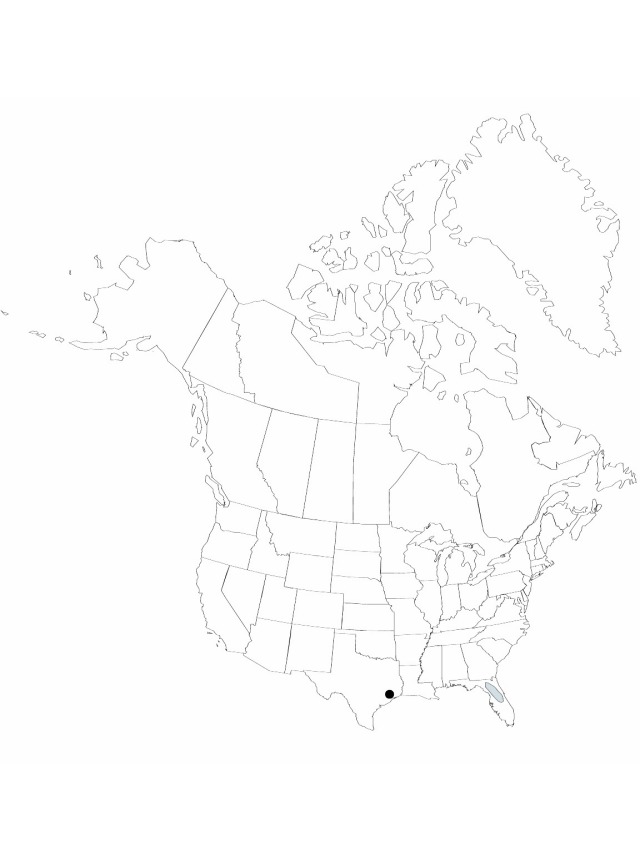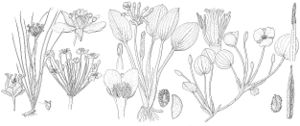Hydrocleys nymphoides
Abhandlungen herausgegeben vom naturwissenschaftlichen Vereine zu Bremen 2: 2.1869; Index Crit. Butom. Alism. Juncagin., 2, 1868.
Herbs, to 50 cm; stolons to 45 cm. Leaves: petioles 1.5–40 cm × 0.9–9 mm, sheathing base to 8.5 cm; blade broadly ovate to orbiculate, 1.4–11.9 × 0.9–10.6 cm, veins 5–9. Inflorescences with 1–6 flowers, proliferating with stolons, leaves; peduncles to 30 cm × 1.5–6 mm; bracts elliptic, 2–4.5 × 0.4–1 cm, apex obtuse; pedicels spreading, 3.5–17.5 cm × 1.5–6 mm. Flowers ca. 6.5 cm wide; sepals 13–28 × 7–13 mm; petals spreading, pale yellow to white with yellow base, 2.3–2.6 × 3.8–4.1 cm; stamens 20–25; staminodes 20+; pistils 5–8, 10 mm. Fruits 10–14.5 × 2–3.5 mm; beak 3.5–5.5 mm. Seeds ca. 1 mm, sparsely glandular-pubescent, glandular trichomes 0.15 mm, 150–200 m m apart, not present on every epidermal cell of seed coat.
Phenology: Flowering summer.
Habitat: Margins of lakes and wet ditches
Elevation: 0–100 m
Distribution

Introduced; Fla., Tex., Central America, South America.
Discussion
Hydrocleys nymphoides is cultivated, either in aquaria or in pools and ponds (D. S. Correll and M. C. Johnston 1970; R. K. Godfrey and J. W. Wooten 1979). The species apparently persists following cultivation or dumping of aquaria.
